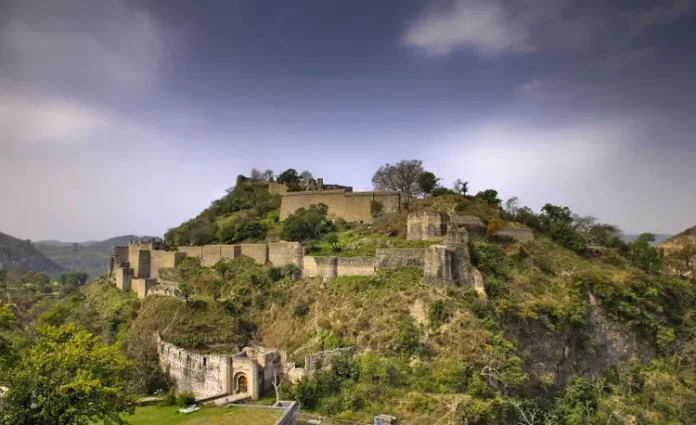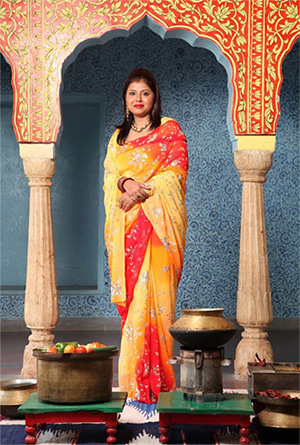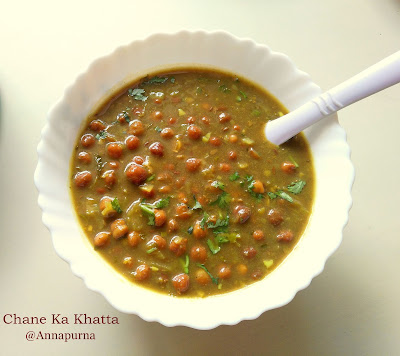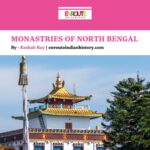Katoch family in Kangra: Culinary tales of the oldest royal family
- enrouteI
- June 5, 2024

The northern state of Himachal Pradesh is famous for its scenic beauty. Known for its magnificent mountain ranges, snow-covered mountains, beautiful valleys and secluded temples. With Shimla as its summer capital and Dharamshala as its winter capital, this state located in the western Himalayas truly feels like heaven on earth. But scenic beauty is not all that it has to offer. This state is home to a wide array of mountainous cultures and traditions, all reflecting its rich past and glory. Their rich culture can be witnessed in the cuisine as well. The cuisine from this state reflects its characteristics of simplicity and good hospitality. And as seen with many other regions, the cuisine of the royal family here also reflects the rich history and the deeply ingrained traditions carried by generations from several centuries. The royal family of Katoch which is from Kangra is not only the oldest surviving royal dynasty in the world but is also famous for the Katoch family’s culinary heritage. The oldest royal family’s culinary stories span across ages, evolving with time while maintaining its royal essence. The royal recipes from Kangra are a delight for all the food lovers out there.

Kangra Fort, Himachal Pradesh
(Source- https://himtimes.com/kangra-fort-largest-fort-in-the-himalayas/)
The Katoch family has a history that spans over 8000 years. Its first mentions are found in the epic Mahabharata which talks about a conflict between Pandava prince Arjuna and Katoch King Raja Susarma Chandra. They are referred to as the Trigarta. Modern-day Kangra is one of the places from ancient Trigarta. The king Susarma Chandra was an ally of Duryodhana. References to the sworn enmity of Katoch with Virat and Matsya kingdoms are also found. The war records of Alexander the Great mention about this kingdom. Maharaja Susarma Chandra built the Kangra Fort which is the 8th largest fort in the country and the largest and oldest dated fort in the Himalayas. Occupying a long and narrow strip of land between the Manjhi and Ban Ganga it was at a strategic location and acted as the wall of defence from the foreign rulers. It was plundered by the Mughals. Today, the fort lies abandoned, but its extinguished fire from the royal kitchens is still alive through the work of the Katoch rulers who kept the Katoch family culinary heritage alive.

Tikarani Shailaja Katoch
(Source- The Luxe Cafe, 2014)
Tikarani Shailaja Katoch
When Princess Shailaja from the royal family of Sailana, a princely state in Madhya Pradesh, got married to the scion of the Katoch royal family, Raja Shri Aishwarya Chand Katoch from the Kangra dynasty, she fell in love with the cuisine at Kangra. The princess, coming from an illustrious lineage with ties with the royal family of Jaisalmer and Jodhpur is a passionate royal cuisine lover. The love and quest for food and food recipes was deeply ingrained in her as her great grandfather, Raja Digvijay Singhji was a great food lover and compiled the royal recipes. He is the author of a book titled ‘Cooking Delights of the Maharajas’. The recipes for this cookbook were compiled by the maharaja himself and he often went to royal kitchens to experiment with the recipes and to gain insights into various cooking techniques. At the event of her wedding with the present king of Kangra, Rani Shailaja was gifted this book. Food dishes from her native place were equally liked by the Kangra family. Soon she immersed herself in the wo\rk of promoting the Kangra royal family cuisine and today works passionately to bring out the wonderful recipes that are an integral part of the Katoch family food culture.

The Dham thali
(Source- Times Now,2024)
Katoch royal family cuisine
The oldest royal family cuisine stories are incomplete without the mention of Dham, the traditional food thali from Himachal Pradesh. This Dham cuisine is an integral part of the traditional community meals that are served during festivals. It was essentially served in temples. The meals are generally cooked by chefs belonging to a caste of Brahmins, the Botis. These meals are either cooked in vessels known as Batohi, Baltohi or Charoti. These are antique brass vessels weighing around 30-35 kgs each. The vessels are mounted on a deep trench with fire. This Dham, the gem of Katoch family food culture is served on dried leaves of Tour (Sal) or banyan leaves.

Khatta, a tangy and sweet dish
(Source- Annapurna, 2018)
The menu for Dham is extensive. Firstly, rice is served along with madra of Rajma or chole. This is cooked in yoghurt and with 20 special spices. Mounds of aromatic rice are served with 11 to 12 different kinds of curries and dal. Mashed dal topped with khatta is served next. This khatta is made of tamarind and jaggery which imparts a tangy sweet taste which goes well with the mashed dal. Paneer, cooked in dahi and butter is served. Curries follow and then Mukund bari, and khatta are served. The highlights of this famous thali from the Kangra royal family cuisine are the sweets. These sweets include mitha bhaat and mithdee. The uniqueness of the cuisine lies in its exclusion of garlic and onion, and mostly based on cereals and pulses and not many vegetables. The earth’s nature of the food ties it close to Himalaya roots.
Famous dishes and recipes
- Madra: It is a chickpea-based dish. It mainly consists of yoghurt gravy, and whole spices such as cinnamon, cumin, cloves and turmeric powder. Chana madra, rajma madra and paneer madra are a few types of madra relished.
- Mukund bari: it is one of the key dishes of the Kangra royal family cuisine. It is a famous snack that is made of urad dal and chana dal, fenugreek powder, coriander powder and mustard oil.
- Khatta: a dish prepared with kala chana, spices and tamarind. This gravy-based dish is healthy and an important part of the royal recipes from Kangra.
- Mitha bhaat: this sweet dish is served at the end of Dham. This rice is cooked with milk, cardamom, cinnamon, sugar, elaichi powder, pistachios and almonds.
- Mithdee: This is another sweet dish that is made from sugar syrup and dried fruits.

Meetha bhaat(sweet rice)
(Source- Annapurna, 2018)
The royal kitchens have always been a treasure trove of vibrant recipes. These recipes, cooked in the kitchen for generations, carry the rich taste of the traditions and culture. The royal kitchens from the Kangra royal family cuisine exude the taste that is refined by the pure Himalayan air, blissful nature and simplicity. These recipes have been passed down for generations, saw little modifications and are proudly displayed as a part of the Katoch family culinary heritage. The royal family members play an important part in promoting this food culture and its uniqueness. Rani Shailaja Katoch has often emphasised the richness, healthy and simple nature of the food and continues to work on making the cuisine reach a wider audience. The Maharaja Sansar Chandra Museum showcases the legacy of the Katoch dynasty and has various silver and golden utensils on display which echo the oldest royal family culinary stories. The museum also has a cafe which promotes Kangra cuisine. The present Yuvraja of the Katoch family, Prince Ambikeshwar Katoch plays an active role in working for his family’s legacy.
References
Kapoor, Anju. “Traditional recipes of district Kangra of Himchal Pradesh.” Indian journal of Traditional knowledge (2010).
Kumar, Monica Tanwar and Vikas. “Himachali Dham: Food, culture and heritage .” Journal of ethnic foods (2017).
https://www.slurrp.com/article/when-the-royal-kitchens-of-sailana-and-kangra-met-1669789246620
https://m.economictimes.com/magazines/panache/food/the-kangra-connect/slideshow/59000466.cms
https://www.thebetterindia.com/96468/kangra-fort-nagarkot-kangra-himachal-pradesh/
https://thedailyguardian.com/royal-culinaires-rani-shailaja-katoch-of-kangra-lambagraon/
https://www.youandi.com/royal-cooking-tales-tikarani-shailaja-katoch-lambagraon-kangra/


















